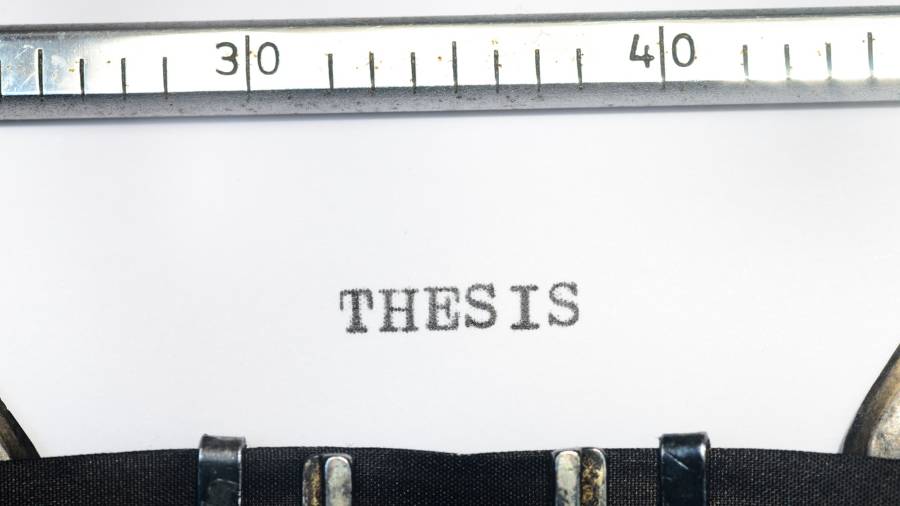You may be wondering what academic proofreading is. It’s crucial to understand the importance of proofreading, especially for students, professors and researchers who are required to produce a lot of writing during their university careers. What exactly is academic proofreading?
Academic proofreading is a process of reviewing scholarly documents that are produced by students, professors and researchers in colleges and universities. This involves checking the texts for correct grammar, capitalization and punctuation.
The academic proofreading process is different from other types of proofreading .
Learn more about the importance of this type in the writing process. We’ll then learn how to proofread your academic documents so that readers can focus on your ideas instead of being distracted by errors.
What is Academic Proofreading?
The final step of the four-step editing process is proofreading. The four stages of editing are:
- Developmental editing
- line editing
- Copyediting
- Proofreading
Academic Editing vs. Academic Proofreading
Editing is concerned with the overall picture (organizational structure and tone). Proofreading is concerned with the details.
A proofreader will correct mistakes in spelling, grammar and punctuation. A proofreader will also look for incorrect word choices, words that are repeated or omitted, and formatting mistakes.
Proofreaders, like editors, work with style guides to ensure that the writing adheres the guidelines.
The proofreader will ensure that all references, bibliographies, and works-cited pages are formatted correctly.
A good proofreader will ensure that the source for all in-text references is listed at the end. The proofreader will also remove any sources that appear in the works-cited or reference page but are not cited within the document.
Here are some differences between editing and proofreading in academics.
Academic Proofreading vs. Academic Editing
| Academic Editing | Academic proofreading | |
| What to Do When You’re Done | On the first draft | On the last draft |
| What it Improves | The big picture | Details |
| Pace of Work | Slower (more in depth) | Editing moves faster than moving. |
| What is Rewriting? | You can also find out more about us on our website. | No, |
| What is the Subject Knowledge required? | Yes, | Highly preferable, but not essential |
| Does the candidate need to be familiar with the relevant style guide? | Yes, | Yes, |
Who performs academic proofreading?
Next question: who does academic proofreading, and how do they do it? It depends.
Note In most cases, undergraduate students can have another person proofread their work. It’s best to always check the academic policies of a university to ensure that proofreading is allowed for all courses.
Even though we tend to think of proofreading by professionals, it is still beneficial to have a second set of eyes look over your work.
The best results are achieved by hiring a professional proofreader who is familiar with the subject. However, this may not always be possible.
Here are some examples of documents that can be considered academic proofreading.
Examples Scholarly Texts That Need Proofreading
- Research papers
- You can find out more about this by clicking here.
- lab reports
- Personal statements
- Statements of Purpose
- college admissions essays
- Theses
- Dissertations
- Journal articles
- Research proposals
Let’s find out who could benefit from academic editing.
Examples Of People Who Need Academic Proofreading
- Students applying to College
- Students
- Graduate students
- Professors
- Researchers
Let’s look at why academic proofreading can be so important.
What is the importance of proofreading academic writing?
Proofreading in academic writing is just as important as it is for all other types of writing. Admissions committees and professors often review academic texts.
There are many reasons why proofreading academic work is important.
- This increases the likelihood that a professor’s research will be accepted for publication.
- Proofreading is the process of ensuring that sources in a document are correctly cited and recorded.
- This allows for improved clarity and readability in a text.
- Proofreading is the final polish to a high-quality piece of work.
- This leads to higher grades for undergraduates.
- This helps grad students to write a stronger dissertation or thesis.
- Students who proofread their essays are more likely to get accepted into the college of their choice.
The final step of the editing process is proofreading. Proofreading is the final step in the editorial process.
How do I proofread my academic paper?

It is best to proofread a paper methodically and carefully. A checklist with all the elements is helpful (grammar and punctuation, format, etc.). It can be useful to create a checklist of all the elements you should check. It’s also a good idea to use the best proofreading techniques that you know.
See the most effective proofreading strategies for scholarly documents.
You can use the Read Aloud feature on your computer to have it read back to you.
As you wrote your paper, you’ve probably already read several sections. Your eyes will read what you believe that you wrote, not what you actually wrote.
We need to add another sense when we proofread our work in order to offset the disadvantage. Hello ears!
You’ll catch mistakes in your text that you would have missed if you had only looked at it. We can’t hear every mistake. You’ll also need to keep your eyes on the computer screen in order to spot punctuation mistakes.
2) Reduce your reading speed.
My top tip for proofreading with your eyes is to slow down. You’re probably used reading quickly, but when proofreading you need to slow down.
You must have read the sentence very quickly. The sentence should have read brakes and not break.
Reading too quickly can lead to mistakes being missed. You’ll then have to proofread the paper again to catch any errors you missed.
Alter the text.
Change the look of your document to detect more mistakes. Modify the font style, size or color to make it more noticeable. You can divide the text in two columns, or increase the spacing between the lines to make the mistakes stand out.
What is an academic proofreader?

Academic proofreaders are professionals who review scholarly articles, such as essays, theses and dissertations. These professionals go through these documents with a fine tooth comb in order to find and correct mistakes such as punctuation, capitalization and spelling.
It is essential that academic proofreaders are familiar with the main style guides for academic proofreading.
- Chicago Manual of Style
- The Modern Language Association (MLA) handbook is for the humanities and literature.
- The Publication Manual for Behavioral and Social Sciences of the American Psychological Association
It is also important that they know how to format in-text citations and other elements such as endnotes or footnotes.
The guide will provide the formatting requirements for pages that list the sources used or consulted in the paper.
Academic proofreaders must have a broad range of knowledge in order to understand the subject they are proofreading.
Some Academic proofreaders Choose a Niche
Proofreaders for academic texts are often experts in a particular niche. It is easier to proofread papers if they are familiar with the topic.
You may be interested in my article about online proofreading courses if you are interested in becoming a proofreader.
If you want to be a proofreader, then you need the right training.
This article should have helped you to better understand academic proofreading.
You will have luck whether you are looking to become a proofreader or need someone to check your paper.

